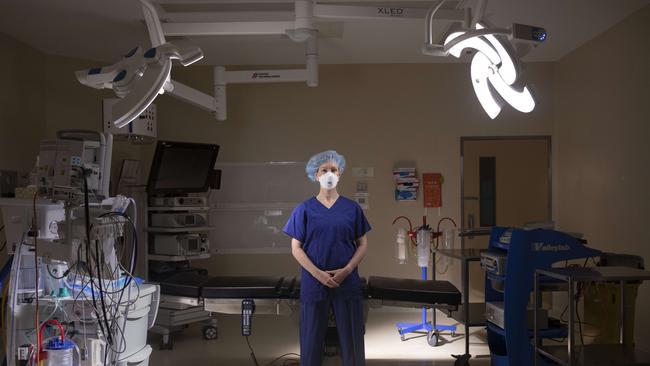Health funds accused of clawing back ‘millions of dollars’ from hospitals in ‘gotcha audits’
Health insurers are being accused of taking advantage of an overstretched private hospital system, clawing back millions of dollars from so-called ‘gotcha’ audits.

Health insurers are being accused of taking advantage of an overstretched private hospital system, clawing back millions of dollars from so-called “gotcha” audits.
Senior private hospital staff say insurers of exploiting contract loopholes allowing them to complete as many remote or desktop audits as they like, compared with onsite visits, which are capped.
This has led to claims health insurers are focusing on details – such as whether a nurse ticked the correct box when a Covid-19 patient needed a ventilator. If the form isn’t filed correctly, health insurers have either not paid for treatment or clawed back thousands of dollars for a mistake.
But health insurers say audits can work both ways. Not only do they take pressure off premiums from identifying errors, they can find under-billing, resulting in hospitals getting paid more.
Craig McNally, chief executive of Australia’s biggest private hospital group Ramsay Health Care – which has so far lost at least $155m from elective surgery bans and other restrictions – said not all insurers were pulling back payments from such audits.
David Koczkar – chief executive of Australia’s biggest health insurer Medibank – added that “nothing had changed” with the way it engaged with hospitals during the audit process.
But there were enough health funds completing “gotcha” audits for Mr McNally to brand the practice reprehensible. “Some health funds, not all, are trying to capitalise on the stress in the system,” he said. “If documentations – if not all the i’s are dotted and t’s are crossed – is seeking to pull back money or not pay at all, and I think that’s reprehensible.”
It is the latest in a long-running feud between private hospitals and health insurers, which has spanned the cost of prosthesis and other medical devices to different funding and care models.
“We have definitely seen an increase in audit volumes throughout Covid, as PHI (private health insurance staff who would ordinarily have capped audit volumes for onsite audits exploit contract loopholes of uncapped desktop/remote audits,” said one hospital source who spoke on condition of anonymity.
“Additionally there’s been an increase in fishing expedition audits, such as the thousands of additional type B and C certificate audits across the industry.
It comes as profits across the health insurance sector more than tripled to $1.8bn in the 12 months to December, while gross and net margins jumped to 17.2 per cent and 7.7 per cent respectively, according the latest data from the Australian Prudential Regulatory Authority.
Barrenjoey Capital Partners analyst Andrew Adams said: “The pandemic environment continues to be favourable for the private health insurers, with ongoing policyholder growth, minimal product buydown and a benign claims environment”.
“We don’t expect a significant reversal of these trends in the near-term, supporting some small ongoing earnings growth for the industry (underlying earnings),” he said.
But pressures on the system remain as waiting lists grow in an overburdened public system and the private health sector continues to grapple with higher costs for essential items.
Rachel David, chief executive of health insurance industry body Private Healthcare Australia, said Australians paid up to double the price for prosthesis than patients in the UK, France and New Zealand, with generic medical devices the “main driver of premium increases”.
“Improving affordability and access to private health insurance is the key to addressing the current hospital crisis and ensuring Australians can access the healthcare they need,” Dr David said.
“Unfortunately, the cost of generic medical devices is consistently identified by APRA as the fastest growing area of healthcare claims expenditure, and therefore the main driver of premium increases. Over the past two years, growth in benefits paid for medical devices (3.8 per cent) has exceeded growth in benefits paid for medical services (3.0 per cent).
“The 2021 Federal Budget included a commitment to start slowly reducing the cost of overpriced medical devices in Australia, saving consumers tens of millions of dollars and reducing cost of living pressures on families. This promise should be implemented now, before demand for essential non-emergency surgery starts to escalate again.”
Dr David also called on the government to restore the private health insurance rebate to 30 per cent, which is currently less than 25 per cent, for low and middle income families.



